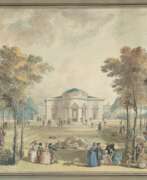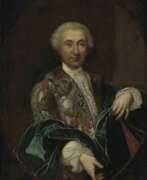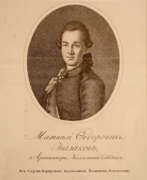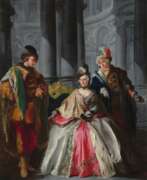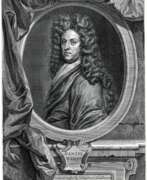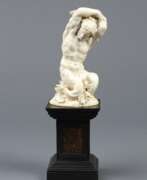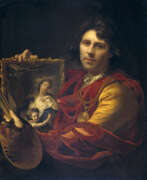Architects 18th century


Robert Adam was a Scottish architect and interior designer, best known for his work during the Rococo and Neoclassical periods in Britain. He was born in 1728 in Kirkcauld, Scotland, and studied at the University of Edinburgh.
Adam began his career as an architect in 1754 and quickly became known for his innovative approaches to architecture and interior design. He developed his own style, which combined elements of rococo, classicism and antiquity.
He designed many buildings, including residences, palaces, churches, bridges and furniture. He also participated in designs for gardens and landscapes. One of Adam's best known projects is the Admiralty Building in London, built in the 1760s.
Adam was also known for his experiments with colour and form in interior design. He often used light colours, mirrors and mouldings to create larger and lighter spaces.
Robert Adam died in London in 1792, but his legacy continues to influence architecture and design in Britain and around the world.


Antônio Francisco Lisboa, known as Aleijadinho, was a renowned sculptor, carver, and architect in Colonial Brazil. His exceptional works adorned numerous churches across the country, showcasing a style influenced by Baroque and Rococo. Considered the greatest exponent of colonial art in Brazil, Aleijadinho is recognized internationally as a leading figure in Baroque art in the Americas.
Despite limited biographical information, his contributions are celebrated through the vast body of work he left behind. His creations, including carvings, architectural projects, reliefs, and statues, were concentrated in Minas Gerais, notably in Ouro Preto, Sabará, São João del-Rei, and Congonhas. The Church of Saint Francis of Assisi in Ouro Preto and the Sanctuary of Bom Jesus of Matosinhos showcase some of his most significant works.


Luca Carlevaris was an Italian painter and engraver working mainly in Venice. He pioneered the genre of the cityscapes (vedute) of Venice, a genre that was later widely followed by artists such as Canaletto and Francesco Guardi.


Louis Carrogis, better known as Carmontelle was a French artist, garden designer, architect, playwright and inventor.
Carmontelle was of simple origins but versatilely gifted. He wrote several plays and three novels, and created portraits of historical figures. He became famous for his painting of little Mozart at the clavier. In the service of Louis-Philippe I, Duke of Orléans, he was responsible for the theatrical performances for the family as stage designer and stage director.
Carmontelle is the planner and designer of one of the earliest examples of a French landscape garden in Paris, now known as Parc Monceau. In designing the garden, Carmontel rejected many of the fashionable trends in landscape design at the time, drawing inspiration from Japanese pleasure gardens and insisting on incorporating illusion and fantasy.
Carmontelle is also credited as the inventor of animated images. Translucent tape with landscapes depicted on it was slowly rolled from one roll to another against a backdrop of daylight, thus creating the illusion of walking through a garden.


Louis-François Cassas was a distinguished French landscape painter, sculptor, architect, archeologist and antiquary.
Besides his architectural and archaeological drawings and sketches, he drew numerous costumes studies, views and processions, as well as scenes from daily life, plants and animals of all sorts. He also exhibited views of his travels at the "Salons", which were periodic art exhibitions sponsored by the French Académie Royale, in 1804 and 1814, and published Picturesque views of the Principal Sites and Monuments of Greece, of Sicily, and of the Seven Hills of Rome, of which thirty parts had already been published by 1813.
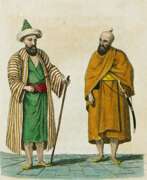

Antoine-Laurent Castellan was a French painter, engraver and architect.
Castellan traveled to Turkey, Greece, Italy and Switzerland. He was the official artist of the mission of Engineer Ferrego to the court of Sultan Selim III, spending several months in Constantinople in 1797. Castellan was a prolific draughtsman, making notes of everything he saw in Constantinople, and also engaged in portrait painting of socialites, which he captured in numerous works he published on his return to France. His best-known work is The Manners, Customs and Costumes of the Otomans and a Brief Account of their History, published in 1812.


Thomas Chippendale was a cabinet-maker in London, designing furniture in the mid-Georgian, English Rococo, and Neoclassical styles. In 1754 he published a book of his designs in a trade catalogue titled The Gentleman and Cabinet Maker's Director — the most important collection of furniture designs published in England to that point which created a mass market for furniture—upon which success he became renowned. According to the Victoria and Albert Museum, «so influential were his designs, in Britain and throughout Europe and America, that "Chippendale" became a shorthand description for any furniture similar to his Director designs».


Charles-Louis Clérisseau was a French architect, draughtsman, antiquary, and artist who became a leading authority on ancient Roman architecture and Roman ruins in Italy and France. With his influence extending to Russia, England, and the United States, and clients including Catherine the Great and Thomas Jefferson, Clérisseau played a key role in the genesis of neoclassical architecture during the second half of the 18th century.


Paul Decker the Elder was a German architect and engraver.
He created a series of copperplate engravings depicting designs for ideal princely and royal architecture, including palaces, fountain cascades, and gardens. Decker's work was published in three volumes (1711-1716) under the title Fürstlicher Baumeister oder Architectura Civilis.


Giovanni Battista (Giambattista) Foggini was an Italian sculptor active in Florence, renowned mainly for small bronze statuary.
Foggini's pupils included Fernando Fuga, his nephew Filippo della Valle, Balthasar Permoser, Giovacchino Fortini and Giovanni Baratta. Massimiliano Soldani Benzi was a contemporary student with Foggini in Rome and also active in small bronze sculpture.


Domenico Fossati was an Italian artist, painter, architect and stage designer of the second half of the 18th century.
Fossati studied painting at the Academy of Fine Arts in Venice. His works as a set designer and scenographer can be found in the theaters and palaces of Venice, Padua and other Italian cities, as well as at La Scala in Milan. Fossati's folios with his ink sketches of stage sets, details of rococo ornamentation, and drawings of fantastic creatures inhabiting an outlandish world have also survived.


John Gantz was an Austrian-born architect, painter, surveyor and lithographer.
Gantz worked for the East India Company from about 1800 to 1803 as a draftsman and architect. A manuscript list of Madras residents dated March 1819 lists him as "Architect, originally from India". By 1827, Gantz had installed the first lithographic printing press in Madras, one of the first such printing presses in India. Gantz's drawings depict the bridges and architectural structures of the city, the inhabitants in their daily activities, modes of transportation, crafts and professions of Indians, he also painted picturesque landscapes of India.
Gantz had two sons, architect Justinian and Julius.


Arsène Lacarrière Latour, full name Géraud Calixte Jean Baptiste Arsène Lacarrière Latour, was a French-born American engineer and military officer, architect and surveyor, and writer.
He studied architecture and engineering at the Académie des Beaux-Arts in Paris and served briefly in the French Army Corps of Engineers. In 1805 Latour came to New York, where he worked first as a merchant, then as an architect and surveyor, and opened an architectural firm in New Orleans. In 1812. Latour became a U.S. citizen.
In 1814. Latour became Andrew Jackson's military engineer and made an important contribution to the American victory at the Battle of New Orleans. After the war ended, Latour published a book, Historical Memoirs of the War in West Florida and Louisiana, 1814-1815, which is still valued for its eye-witness view of the war.
In 1816. Latour traveled with Jean Lafitte on an expedition to survey and map the Southwest as an agent for Spain. From 1818 to 1834 he worked as an architect in Havana. His manuscripts include an extensive report describing Havana's thriving economy in 1815-1821, local agricultural production (sugar cane, coffee, tobacco), trade with Europe, the United States, and the colonies of South America; statistics; and a section on the city's possible future expansion and growth. Latour subsequently returned to France, where he died.


Carlo Maratta, an Italian painter, was a prominent figure in the Roman school of art during the late 17th century. Known for his classical approach to Baroque painting, Carlo Maratta's works were deeply influenced by the styles of Raphael and Andrea Sacchi, blending classical grandeur with Baroque expressivity. His training under Sacchi and subsequent exposure to Pietro da Cortona's coloristic style significantly shaped his artistic development.
Carlo Maratta's career flourished with a series of public and official commissions, making him a leading painter in Rome, especially after Bernini's death in 1682. His portfolio includes religious paintings, altarpieces, portraits, and fresco cycles, with a notable emphasis on paintings of the Madonna and Child, which reinterpreted High Renaissance motifs. His work was highly esteemed across Europe, influencing not only Italian art but also attracting the attention of English visitors on the Grand Tour.
One of Carlo Maratta's significant contributions to the art world was his involvement in painting restoration towards the end of his career, including works by Raphael and Carracci. This phase underscored his deep connection to the classical art tradition. Maratta passed away in Rome in 1713, leaving behind a legacy that continued to be celebrated in art history.
For art enthusiasts, collectors, and experts, Carlo Maratta's work offers a window into the transition between the Baroque and the emerging Rococo style, embodying a blend of dynamism and classical restraint. His paintings, many of which remain in situ in Roman churches, offer a testament to his enduring influence on Baroque classicism.
To stay updated on exhibitions and insights into Carlo Maratta's works, art aficionados are encouraged to subscribe for updates, ensuring access to the latest research and opportunities to view his celebrated works in museums and galleries around the world.
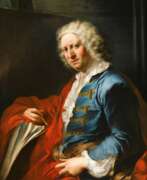

Giovanni Paolo Pannini (Panini) was an Italian painter and architect who worked in Rome and is primarily known as one of the vedutisti. As a painter, Panini is best known for his vistas of Rome, in which he took a particular interest in the city's antiquities. Among his most famous works are his view of the interior of the Pantheon (on behalf of Francesco Algarotti), and his vedute — paintings of picture galleries containing views of Rome. Most of his works, especially those of ruins, have a fanciful and unreal embellishment characteristic of capriccio themes. In this they resemble the capricci of Marco Ricci. Panini also painted portraits, including one of Pope Benedict XIV.


Domenico Parodi was an Italian late Baroque painter, sculptor, and architect.
His father was the famous Genoese sculptor Filippo Parodi and the painter Giovanni Battista Parodi was his younger brother.
Parodi is known for his fantastic decorative ceilings in religious buildings and palaces depicting mythological and allegorical subjects. He created commissioned busts and portraits, tombstones, altars, and sculptures. He also continued the sculptural tradition of his father, carving figures of Apollo, Ariadne, Bacchus and Diana in marble in elaborate techniques.


Giovanni Battista Piranesi was an 18th-century Italian painter, engraver, architect, and archaeologist who represented Neoclassicism and Romanticism. He was famous for creating a lot of original etchings with images of antique architecture monuments.
Giovanni Piranesi created hundreds of drawings and drafts in which he depicted the reconstructed ruins of ancient Roman buildings. His works are still used as teaching aids in the education of architectural students in many prestigious European universities. Piranesi periodically printed voluminous books with dozens of his own engravings depicting modified ancient architectural masterpieces - "graphic fantasies". His works were in demand among professional architects, who borrowed Piranesi's original ideas for their designs.
The peak of Piranesi's career came in the 1760s when, in recognition of his merits, he became an honorary member of the Guild of St. Luke and received from the Pope the title of Knight of the Golden Spur.
More than 700 of the master's original etchings have survived, printed in scholarly works.
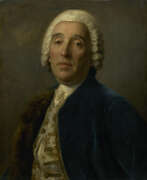

Francesco Bartolomeo Rastrelli was an Italian architect who worked mainly in Russia. He developed an easily recognizable style of Late Baroque, both sumptuous and majestic. His major works, including the Winter Palace in Saint Petersburg and the Catherine Palace in Tsarskoye Selo, are famed for extravagant luxury and opulence of decoration.


Alessandro Sanquirico was an Italian painter, scenographer, set designer and architect.
Sanquirico began his work as a decorator for festive celebrations in Milan. In addition to scenography, Sancuirico studied architecture and perspective with Giuseppe Piermarini, architect of the La Scala opera house. Between 1817 and 1832, Sanquirico was La Scala's chief scenic designer and skillfully used the neoclassical architectural style in his sets, as well as images of exotic locations. The scenography created by Sanquirico for La Scala reached a higher level than contemporary designs for opera houses in any other European country. For 15 years he was the sole scenographer, designing sets for productions of operas by Donizetti, Rossini, Bellini, Mozart, Meyerbeer and Pacini. In total, Sanquirico designed more than 300 productions for this theater, including many premieres.
Sanquirico also created several large-scale paintings of historical subjects, worked on the interior of Milan Cathedral and fulfilled other commissions from wealthy nobles.


Johann Christian von Mannlich was a German painter of the late 18th and early 19th century. He is known as a painter and architect.
Von Mannlich studied painting in Paris early in his career and was influenced by the French Rococo, which affected his early works. He became court painter to Prince Christian IV of the Palatinate-Zweibrücken and then general director of construction under Prince Charles II Augustus. At the end of his life, the artist was in charge of the art gallery of King Maximilian I Joseph of Bavaria. He also participated as lead architect in the construction of Karlsberg Castle.






























